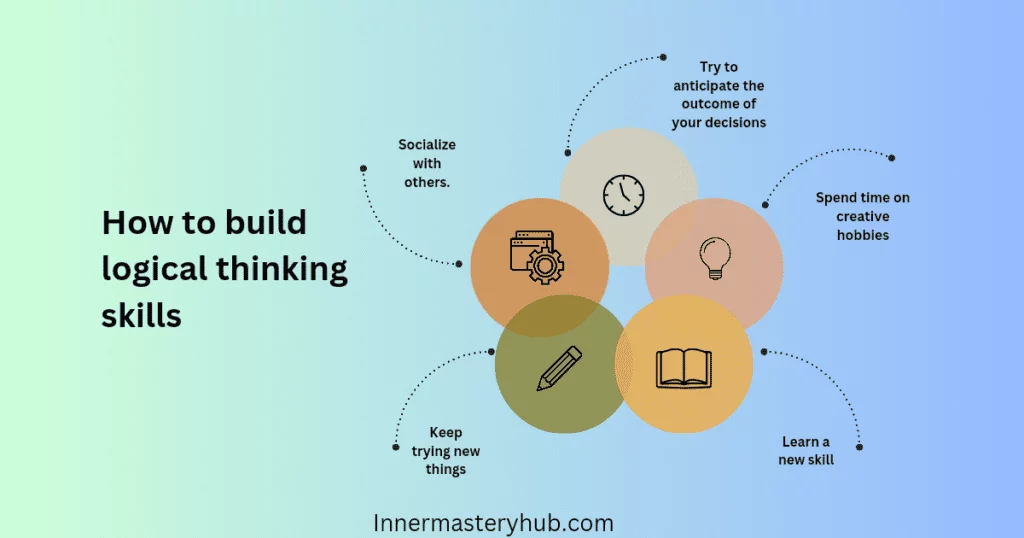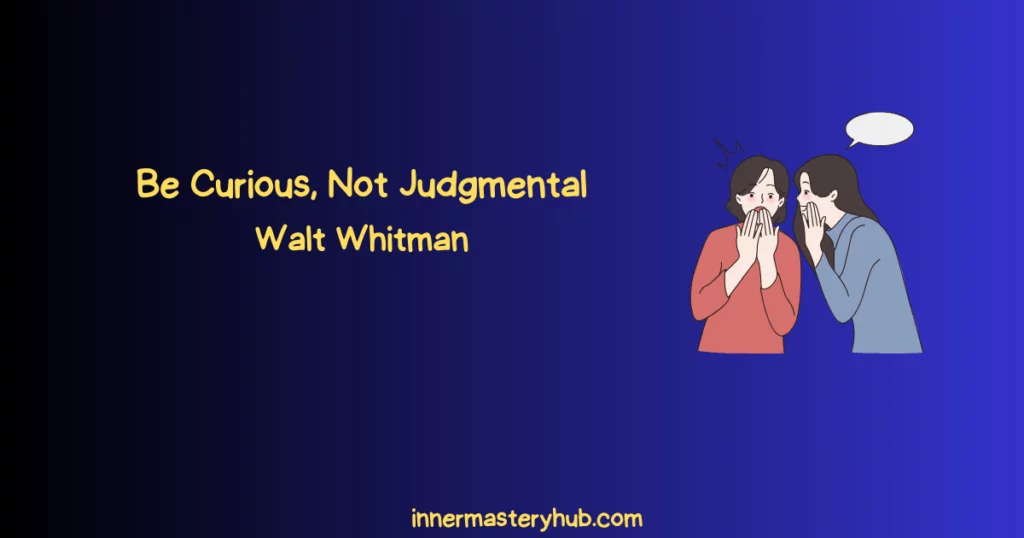
The hidden corners of our psyche hold untapped potential but also shadows – repressed emotions, limiting beliefs, and unconscious patterns that can hold us back. Embarking on a shadow work journey isn’t easy, but with the right guide, it can be transformative. And that’s where shadow work books come in.
RELATED: Overcoming the “I Hate My Body” Struggle
Table of Contents
What Is Shadow Work?
A reflective exercise called “shadow work” looks into the hidden parts of your mind, often called your “shadow self.” The famous psychologist Carl Jung said that this shadow comprises the parts of ourselves that we don’t want, don’t accept, or find annoying. It holds feelings we try to hide, urges we don’t want to give in to, and negative traits we try to avoid observing. Let us explore shadow workbooks.
RELATED: Top Self-Esteem Books to Transform Your Inner Life
Why reading the Shadow Work books is Important?
The shadow may hold awful things, but it’s not bad in and of itself. Shadow’s work stresses how important it is to recognize and include these secret parts. Accepting our shadow teaches us more about our drives, triggers, and mental patterns. When we cast our shadow onto others and blame them for our insecurities, it gets in the way of real connections.
Shadow work books help us become more responsible and give us the tools to improve our relationships. As a result, we can reach our full potential and live a more authentic life when we combine these things. Studying shadow workbooks is the best way to understand and work on our shadow aspects, and here come the shadow workbooks to rescue us.
RELATED: Emotional Triggers: 7 Strategies To Manage Them
5 of the best Shadow work books
The 5 best shadow work books will help you understand your shadow and learn how to integrate it into your personality. Dive into shadow work books!
1. A Guide To Shadow Work books: A Short And Powerful 9 Step Guide To Healing by Michelle L Geldenhuys
It is highly recommended that you read this one of the fantastic shadow workbooks if you are searching for a concise and action-packed guide on inner work.
Michelle Geldenhuys, the author of A Guide to Shadow Work, outlines nine stages that should be followed to achieve inner healing. All nine steps she describes in her book are ones she has personally experienced during her path toward healing. You are aware that the information you are reading has been subjected to investigation and practice.
Check the price on Amazon here.
RELATED: Breaking Free from Self-Abandonment: A Path to Self-Healing and Empowerment”
2. Meeting The Shadow: The Hidden Power of the Dark Side of Human Nature, edited by Connie Zweig and Jeremiah Abrams.
The book “Meeting the Shadow: The Hidden Power of the Dark Side of Human Nature” by Connie Zweig and Jeremiah Abrams is all about the shadow self, which is the part of ourselves that we hide or ignore. The writings in this book build on Carl Jung’s idea of the shadow, which is at the heart of shadow work.
People still trying to understand the idea of the shadow and want to learn more about it should check this out. Plus, it’s a great way to get to know the people who think about shadow work.
It’s a great collection of shadow work themes that does a great job of mixing the psychological and the philosophical. It’s a great place to start. This book has writings by other authors on this list.
Check the price on Amazon here.
3. Games People Play by Eric Berne.
The book “Games People Play,” written by Eric Berne, is considered to be a classic in the field of transactional analysis. This book investigates the psychological games individuals engage in when interacting with others.
Berne contends that these games frequently have their origins in our subconscious and have the potential to provide us insight into our shadow selves, which are the aspects of ourselves that we choose to conceal or ignore.
The primary idea of the book is that our ego states determine the parts we play, and these roles change based on the circumstances. The purpose of this book is to assist us in recognizing these games for what they are and breaking free from them.
The book “Games People Play” is an excellent resource for recognizing patterns and behaviors that are founded in our shadow selves, and it is recommended to anyone interested in shadow work.
When we become conscious of these patterns, we can work toward integrating our shadow sides and leading more genuine and satisfying lives. This book is written in an entertaining and approachable language, and it still holds up in many respects despite being somewhat outdated.
4. The Dark Side of the Light Chasers: Reclaiming Your Power, Creativity, Brilliance, and Dreams by Debbie Ford.
Check the price on Amazon here.
In the same vein as the other books on this list, “The Dark Side of the Light Chasers” by Debbie Ford is a self-help book that instructs readers on how to accept and embrace their shadow side.
The author contends that to lead a complete and genuine life, we must stop denying or pretending that our shadow side does not exist and instead acknowledge and incorporate it into our lives.
Using personal experiences and activities, Ford assists readers in recognizing their shadow characteristics and analyzing how these characteristics appear in their lives.
Journaling prompts, meditation exercises, and visualization techniques are some of the practical tools she offers to readers to assist them in integrating their shadow side and embracing their complete selves.
RELATED: Escaping from Reality – Avoidance Or Healing?
5. The Anatomy of the Psyche: Alchemical Symbolism in Psychotherapy by Edward F. Edinger.
The book “The Anatomy of the Psyche: Alchemical Symbolism in Psychotherapy” by Edward F. Edinger is fascinating because it looks at how alchemical symbols and Jungian psychology are related.
Edinger says that the study of alchemy can help us understand the process of psychological change, which includes shadow work. (I know it’s a little off.)
By looking at the alchemy’s symbols and images, he gives us clues about how to become our unique selves and bring the shadow into our lives. Yes, that does sound like a lot. This is a more complex and theoretical book to read.
This book will likely interest you if you’re interested in Jungian psychology, alchemy, or spiritual growth.
Owning Your Psychological and Spiritual Growth
Shadow work is frequently considered spiritual development because it explores and integrates the unconscious self. Spiritually and psychologically, the “shadow” is one’s concealed or repressed fears, desires, unsolved traumas, and unacknowledged self.
Shadow work is beneficial and transformative for spiritual growth for various reasons:
Self-Awareness
A big part of spiritual growth is becoming more aware of yourself. Shadow work can help by exploring the unconscious mind, bringing secret parts of oneself to light, and learning more about one’s drives, behaviors, and patterns.
Wholeness and Integration
Many different traditional spiritual practices emphasize the concept of gaining wholeness or self-realization. To attain a more complete and genuine sense of self, shadow work integrates all elements of the self, including both the light and the dark components of the personal identity.
RELATED: Unlocking Inner Peace: Embracing the Power of Surrender
Spiritual Evolution
The path toward self-discovery and personal development is considered by some spiritual traditions to be an essential component of spiritual evolution. Working with the shadow is viewed as a means of spiritual growth that involves overcoming restrictions and increasing one’s consciousness.
Healing
Individuals who engage in shadow work have the potential to achieve healing and liberation as a result of addressing and processing repressed emotions and traumas. Completing this process can uncover a feeling of freedom from past traumas and an increased capacity for self-love and compassion.
Ego transcendence
When discussing spirituality, the ego is often considered the limiting and conditioned sense of self. Shadowwork can help people overcome their egos by making them aware of their patterns and limits. This can lead to spiritual growth and a link to a bigger version of themselves.
Connection with the Divine
A more profound connection with the divine or the spiritual essence can be achieved by understanding and incorporating the shadow into one’s life. Acknowledging one’s complete being, including the components of one’s being that may feel unconnected or incompatible with spiritual aspirations, is a necessary step in the process.
Facing Fear and Resistance
Confronting fear and resistance is a common component of getting through difficult situations, such as facing the shadow. It is possible to view overcoming these problems as a spiritual practice that has the potential to create courage, resilience, and personal development.
Understanding that shadow work is practiced in many spiritual and psychological traditions is crucial. Shadowwork transforms spiritual development for many since it emphasizes self-discovery, integration, and personal progress.
RELATED: Do You Have a Fear of Power? Why You Should and How to Overcome It
What to do after reading these Shadow work books?
After reading shadow work books, working on your shadow self requires applying the principles and activities to your personal growth and self-awareness. Steps to integrate what you’ve learned as a beginner:
Self-Reflection, self-care
Reflect on what you’ve read. Consider how it matches your feelings and experiences. Find patterns in your thoughts, habits, and relationships that may indicate your shadow self.
Shadow work journal and workbook
Journal your thoughts, feelings, and observations as you explore your shadow self.
Write about events, causes, or situations that create powerful emotions; these may be your shadows.
Shadow Characteristics
List the traits or characteristics you struggle to accept in yourself. You may conceal or deny these. Be honest about your weaknesses, anxieties, and insecurities.
Acceptance
Be kind to yourself. Recognizing that everyone has a shadow side is essential to personal progress. Explore your less desirable traits with self-compassion and avoid self-judgment.
RELATED: Uncover Life-Changing Self-Acceptance Quotes for Personal Growth
Mindfulness, Meditation
Practice awareness and meditation. These methods help you observe your emotions and ideas without judgment. Mindfulness helps identify inner shadow features and allows for a conscious response.
Therapy or Counseling
Consider seeking mental health professionals’ help. A therapist or counselor can provide guidance, support, and a safe space to explore and work through your shadow self.
Integration
Focus on integrating the positive aspects of your shadow self. Recognize that there can be strengths and valuable qualities hidden within these aspects. Strive for a balanced and holistic self-awareness that incorporates both light and shadow.
10 shadow work questions to ask yourself?
Shadow work involves exploring the hidden or unconscious parts of yourself to achieve personal growth. Here are 10 questions to help you dive into shadow work:
- What traits in others trigger a strong emotional reaction in me, and why?
- When have I felt intense jealousy or envy, and what does this reveal about my own desires?
- What recurring negative thoughts do I have about myself, and where do they originate?
- How do I react to criticism, and what does this say about my insecurities?
- What aspects of myself do I hide from others, and what am I afraid they’ll see?
- When have I felt ashamed or embarrassed, and what does this teach me about my fears?
- How do I sabotage my own success or happiness, and what underlying beliefs drive this behavior?
- What childhood experiences still impact my emotions and behaviors today?
- What responsibilities or situations do I avoid, and what fears are associated with them?
- How do I project my own unresolved issues onto others, and what can I learn from this?
Final Thoughts
You are owning your shadow selves and living a more fulfilling and self-aware life. I recommend that shadow work books be great resources for understanding and practicing it. You can always learn more, whether you’re new or have been investigating it.
Read the literature that speaks to you and start loving your shadow self. The path can transform you, bringing calm, self-acceptance, and integration. Heal your inner child and work towards achieving an authentic life, your true self, through this comprehensive guide of best shadow work books.
FAQS
Exercises for healing your trauma?
Practice grounding exercises like deep breathing and mindfulness. Create a journal to express emotions. Seek support from a therapist or support group. Gradually confront triggers in a safe environment. Cultivate self-compassion and set boundaries. Embrace self-care routines. Focus on present safety. Healing your trauma and exploring your hidden self is a gradual, personalized process; seek professional guidance for tailored strategies
Self-care exercises for healing?
Prioritize adequate sleep, nourishing meals, and regular exercise. Practice mindfulness and meditation for mental well-being by engaging in activities that bring joy and relaxation, such as reading, walking, or creative pursuits. Set healthy boundaries, saying no when needed. Foster positive self-talk and self-compassion. Connect with supportive friends and seek professional help if necessary.
How do you explore your hidden self?
Delve into introspection through journaling and self-reflection. Identify suppressed emotions and desires. Explore personal fears and limiting beliefs. Engage in mindfulness to observe thoughts without judgment. Seek diverse experiences and challenge comfort zones. Embrace vulnerability and accept the complexity of your hidden self, fostering self-discovery and personal transformation and growth.
Shadow work prompts?
Explore repressed emotions, patterns, and fears. Reflect on triggers and childhood connections. Embrace imperfections, confront suppressed thoughts, and shift victim perspectives. Consider ancestral influences and integrate positive shadow aspects for growth. Forgive and analyze dreams to unveil subconscious fears. Examine admired individuals for projected traits. Approach with openness and seek guidance if needed.
Affirmation and journal prompts for inner child soothing?
I am deserving of love.”
“It’s safe to express myself.”
“I embrace my inner joy.”
“I am worthy of happiness.”
“My feelings are always valid.”
“I nurture the child within.”
“I am free to play.”
“I trust my inner wisdom.”
“I am resilient and strong.
Integration of the shadow self personal guide?
Integrating the shadow self involves embracing suppressed emotions, acknowledging flaws, and understhttps://innermasteryhub.com/is-it-anxiety-or-intuition/anding hidden desires. It requires self-compassion, confronting fears, and recognizing projection. One achieves a more authentic and balanced self by accepting and incorporating these aspects, fostering personal growth, resilience, and a deeper connection to others.
Shadow work exercises?
Use shadow work exercises:
Mirror Gazing: Stare into a mirror, examining and acknowledging your emotions without judgment.
Timeline Reflection: Map significant life events, noting emotional shifts and unresolved issues.
Symbolic Art: Create art representing suppressed emotions and desires for introspection.
Shadow Journaling: Record shadow traits, exploring their origins and impact on behavior.
Role Reversal: Write from the perspective of your shadow, gaining insights into its needs and fears.
Name some famous shadow work books.
Some notable shadow work books include:
“Owning Your Own Shadow” by Robert A. Johnson
“Meeting the Shadow: The Hidden Power of the Dark Side of Human Nature” by Connie Zweig and Jeremiah Abrams
“The Dark Side of the Light Chasers” by Debbie Ford
“Romancing the Shadow: Illuminating the Dark Side of the Soul” by Connie Zweig and Steve Wolf
“Jung’s Map of the Soul: An Introduction” by Murray Stein (touches on Jungian concepts, including the shadow work books)






